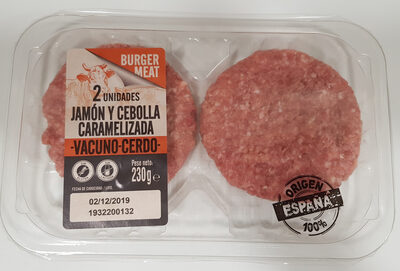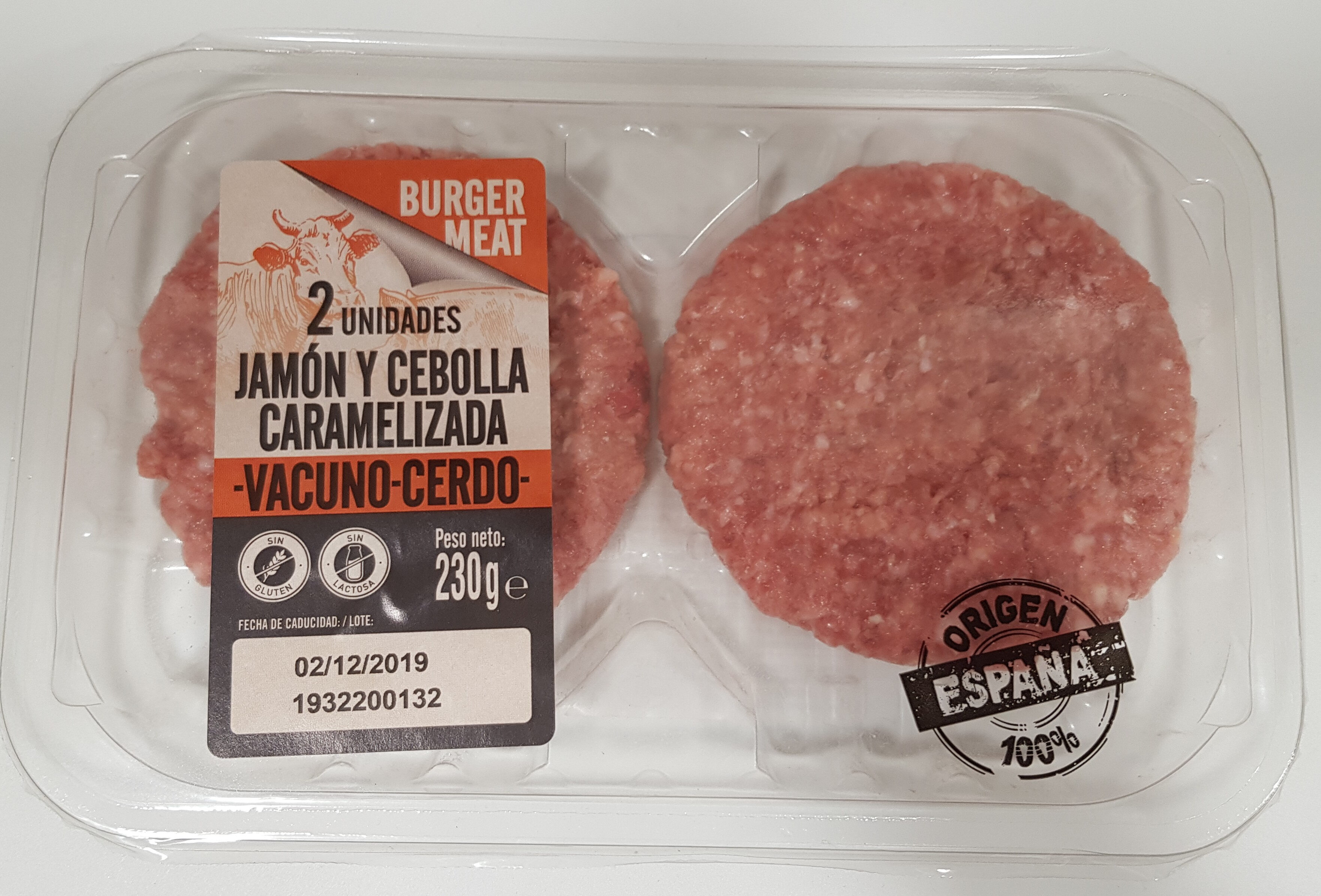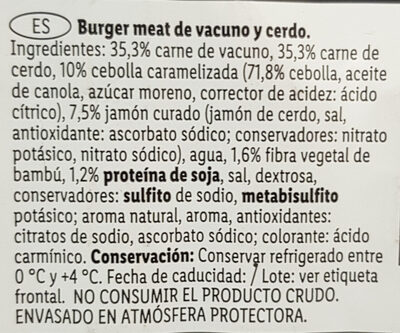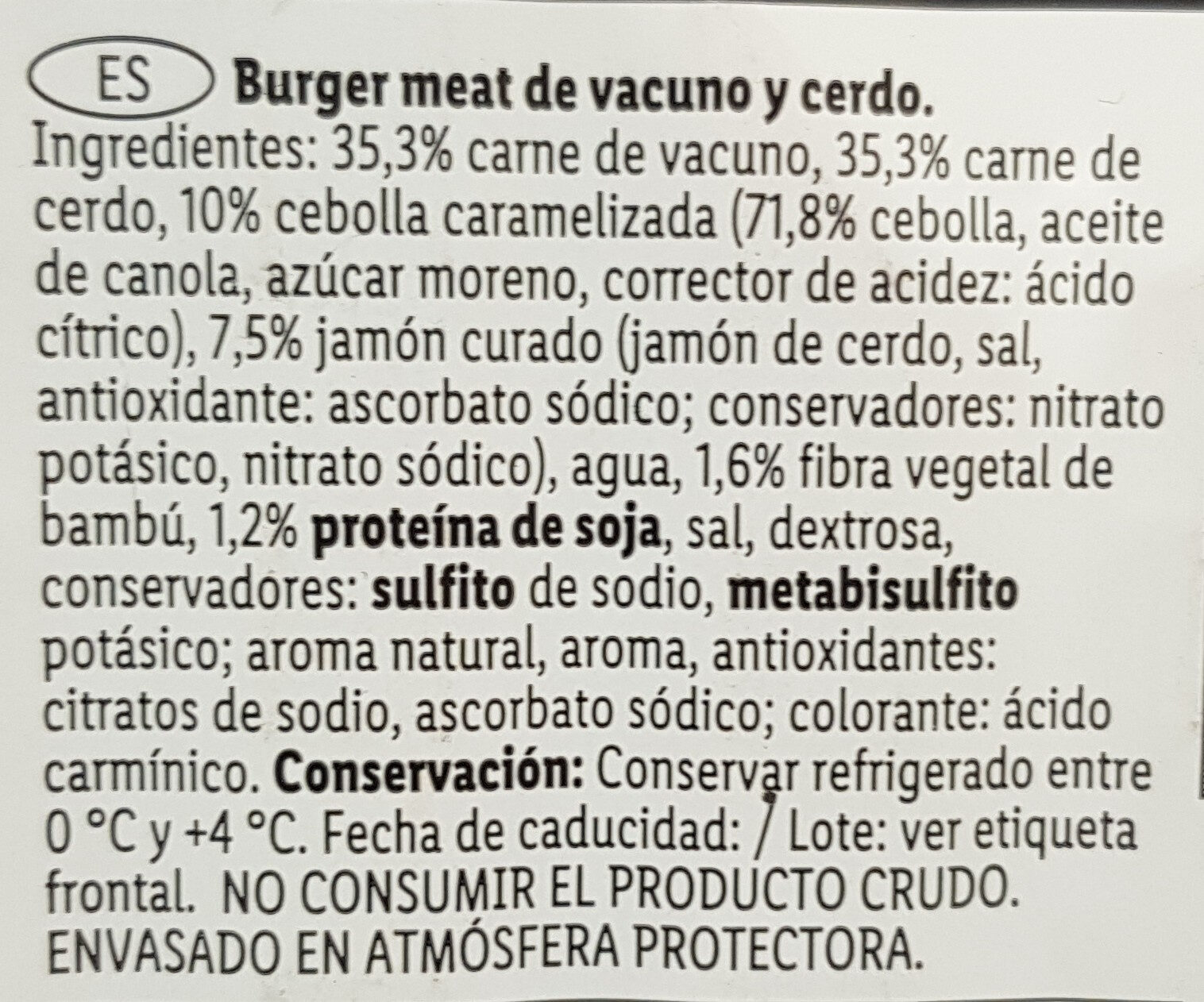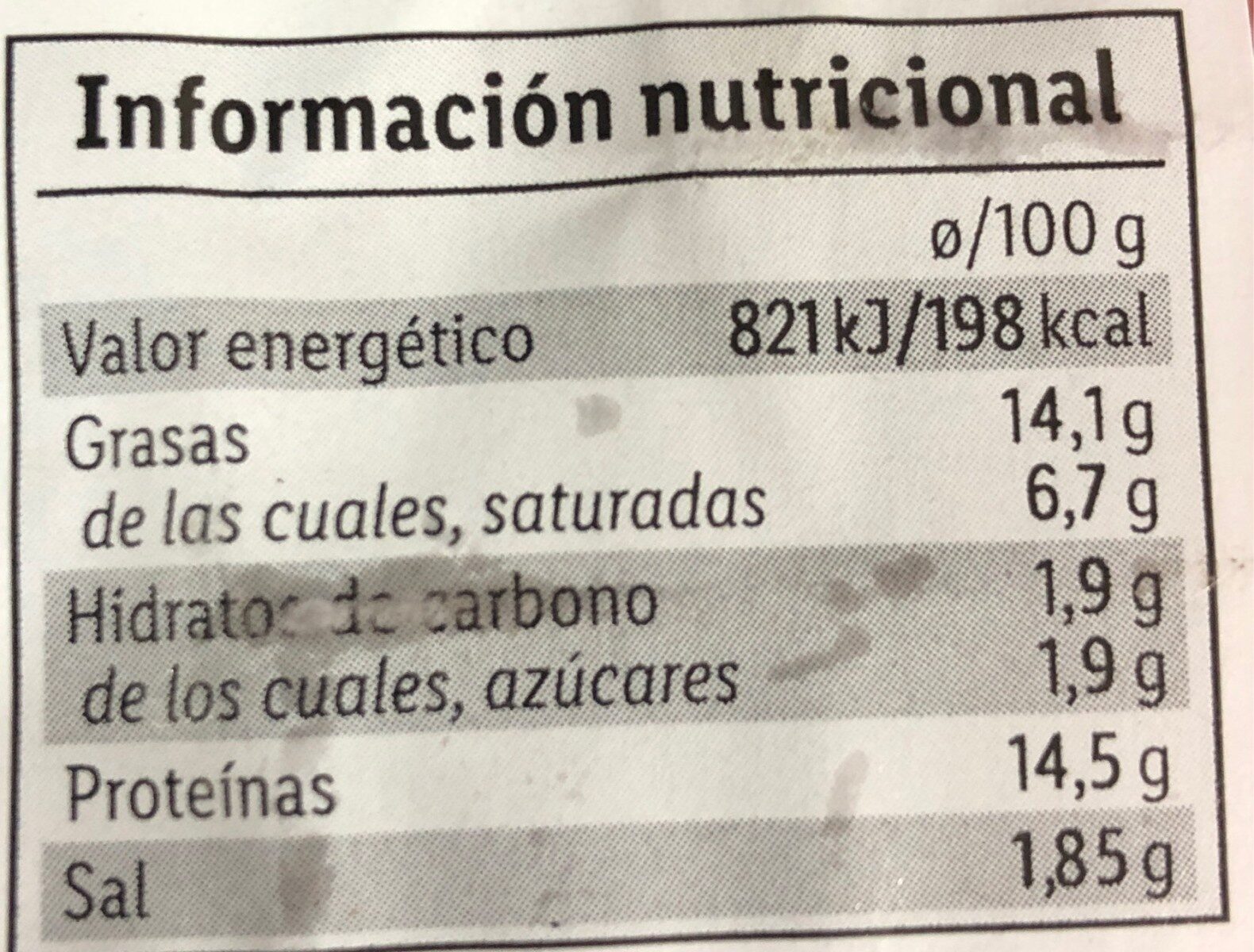Hamburguesa jamón y cebolla caramelizada - Vacuno/Cerdo - Lidl - 230 g
This product page is not complete. You can help to complete it by editing it and adding more data from the photos we have, or by taking more photos using the app for Android or iPhone/iPad. Thank you!
×
Barcode: 4056489140320 (EAN / EAN-13)
Quantity: 230 g
Brands: Lidl
Categories: Meats and their products, Beef and its products, Meat preparations, Meats, Beef, Fish and meat and eggs, Pork and its products, Sandwiches, Fresh meats, Pork, Fresh meat preparations, Ground meat preparations, Fresh ground meat preparations, Hamburgers
Labels, certifications, awards: No gluten, No lactose
Stores: Lidl
Countries where sold: Spain
Matching with your preferences
Environment
Packaging
Transportation
Report a problem
Data sources
Product added on by kiliweb
Last edit of product page on by teolemon.
Product page also edited by alexrios, openfoodfacts-contributors, roboto-app, yuka.D5lkZfiJMZZwJMDe7Lk_xTaWF8DrD892I2Evow, yuka.R28wbFBMOFpyZVFZb2YwbDdFMzMwZjB0M0kzMWVHUHBDZTQ4SVE9PQ, yuka.SHFzZlR2MElqZVFNdGNZUjhSSC81dEp3bkwvNWZYMlNPY1ZMSUE9PQ.
